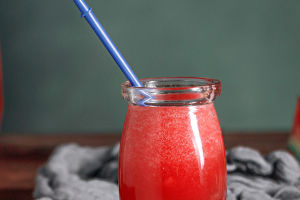In May 2017, the American Academy of Pediatrics issued its latest policy statement regarding the consumption of fruit juice by infants, children, and adolescents.
In contrast to previous recommendations, the new statement adopts a more cautious and restrictive stance on the quantity of juice consumption.
Here, fruit juice refers to 100% pure juice, with beverages containing added ingredients being even less encouraged due to their lack of nutritional value.
What's in fruit juice
Fruit juice, the liquid extracted from fruits with the pulp discarded, primarily consists of water and carbohydrates such as sucrose, fructose, glucose, and sorbitol. Compared to infant formula, fruit juice has a higher carbohydrate content, approximately 1.2 to 2.1 times that of formula.
Additionally, juice contains minerals and vitamins, with some juices being rich in potassium ions, vitamin A, and vitamin C. However, protein content is minimal, and juice is devoid of fat or cholesterol. Furthermore, unless pulp is intentionally retained, filtered juice contains minimal fiber.
Juice benefits
The presence of vitamin C and flavonoids in fruit juice may reduce the risk of cancer and heart disease, conferring long-term health benefits. Additionally, juice serves as a source of hydration, and vitamin C facilitates the absorption of iron from complementary foods.
Therefore, pediatricians have historically recommended juice consumption when introducing complementary foods to infants. To alleviate constipation, physicians may suggest juices high in sorbitol content, such as peach or pear juice. Commercially available juices may also be fortified with calcium and vitamin D, providing essential nutrients.
Juice drawbacks
Due to its palatability, children often consume fruit juice excessively without parental restrictions, under the common misconception of its high nutritional value. However, the medical community has increasingly recognized several drawbacks associated with juice consumption.
Excessive sugar intake can lead to an excess of calories and obesity. Moreover, juice may decrease children's appetite for other foods, leading to nutritional deficiencies. Residual juice in the mouth can cause severe tooth decay. Additionally, excessive sugar in juice may not be fully absorbed in the small intestine, leading to diarrhea, bloating, or abdominal pain, a phenomenon not uncommon in clinical practice.
Juice is not equivalent to whole fruit
The peel of fruits, exposed to ample sunlight, often contains various pigments such as carotenoids, flavonoids, anthocyanins, etc.
Apples, grapes, peaches, plums, blueberries, strawberries, etc., if consumed with the peel, provide these antioxidant nutrients, which are beneficial for human health. Unlike whole fruits, juice lacks the nutrient-rich components found in the peel.
Fruit pulp is rich in dietary fiber, promoting satiety to prevent excessive calorie intake and facilitating regular bowel movements to prevent constipation. Moreover, it can lower cholesterol levels and reduce the risk of future colorectal cancer. For example, a 240cc cup of apple juice requires approximately 3–4 apples to be juiced, resulting in the loss of 12-15 grams of dietary fiber during the juicing process.
Juice poses some potential risks
In addition to ensuring hygiene during the process of juicing fresh fruits, caution should be exercised when purchasing commercially available juice to ensure it has been pasteurized (which the vast majority are). Unpasteurized juice may harbor Escherichia coli, Salmonella, or Cryptosporidium, leading to severe childhood illnesses.
Some parents worry about citrus juice causing allergies. However, small red rashes around the mouth after an infant consumes juice are due to acidic irritation, while diarrhea results from poor sugar absorption, neither being allergic reactions. Citrus fruit allergies are uncommon in infants and young children.
Conclusion
Fruits are an indispensable part of daily diet, and if possible, we should encourage children to consume whole fruits. If pure juice is to replace some fruit intake, it must be limited in quantity, as unrestricted consumption can lead to adverse effects.


